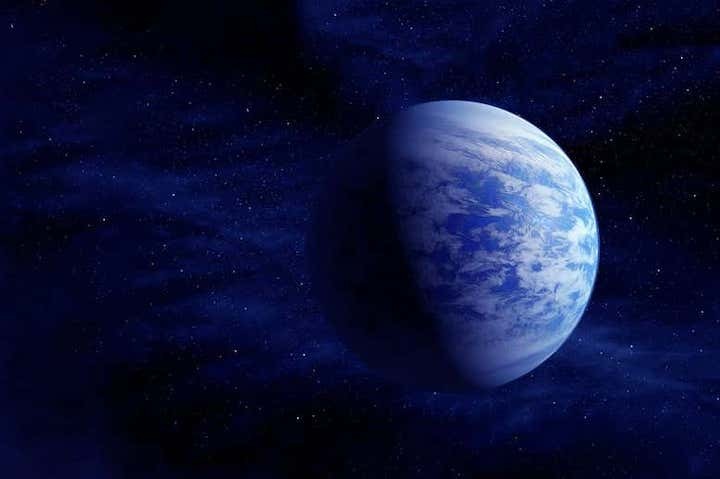3.02.2022
Astronomers have found lots of exoplanets but not much evidence of exomoons, and a new model might explain why

Rocky planets much bigger than Earth might not be able to form large moons like our own, which is crucial for Earth’s stable rotation and climate.
Astronomers have discovered thousands of planets around other stars, but moons in other solar systems have proved more elusive. While this lack of exomoons could be because they are hard to spot and we haven’t looked with powerful-enough telescopes, it is also possible that the moons don’t exist at all.
Miki Nakajima at the University of Rochester, New York, and her colleagues ran simulations of impact events, one of the most common moon-forming scenarios, for a range of rocky and icy planets. They found that planets with a radius 1.6 times greater than Earth’s are much less likely to form moons.
When a planet is hit by an object at high speed, it creates a disc of vaporised rock and water around the planet. Over time, this vapour can condense into “moonlets”, which can eventually coalesce into large moons. But Nakajima and her team found that for large planets, gravity makes the vapour drag on the moonlets and pulls them towards their parent planet before they have a chance to combine.
“It’s kind of similar to a cyclist. If you’re biking, you might feel the [air] drag – that’s what the particles are feeling,” says Nakajima. “As a result, these particles lose their speed and fall towards the planet.”
The model that Nakajima and her team used assumed that the disc could be modelled like a fluid. It also assumed that the object hitting the planet and leading to disc formation struck the planet at an angle of 48 degrees, which previous moon-forming models had used. Future work could explore a range of angles to better confirm the apparent lack of moons, says David Kipping at Columbia University, New York.
However, the lack of moons found in Nakajima and her team’s work is still useful for astronomers.
“They’re saying [planets] that are six Earth masses, or 1.6 Earth radii, shouldn’t form large moons,” says Kipping, who led an exomoon-hunting mission with the Kepler satellite. “That’s great, because I can go out and look for those. If I find them, that’s really interesting. And if we don’t find them, then we have credence for this theory.”
Quelle: NewScientist
